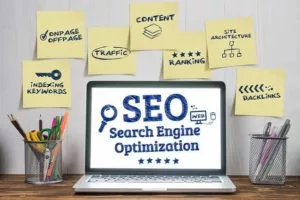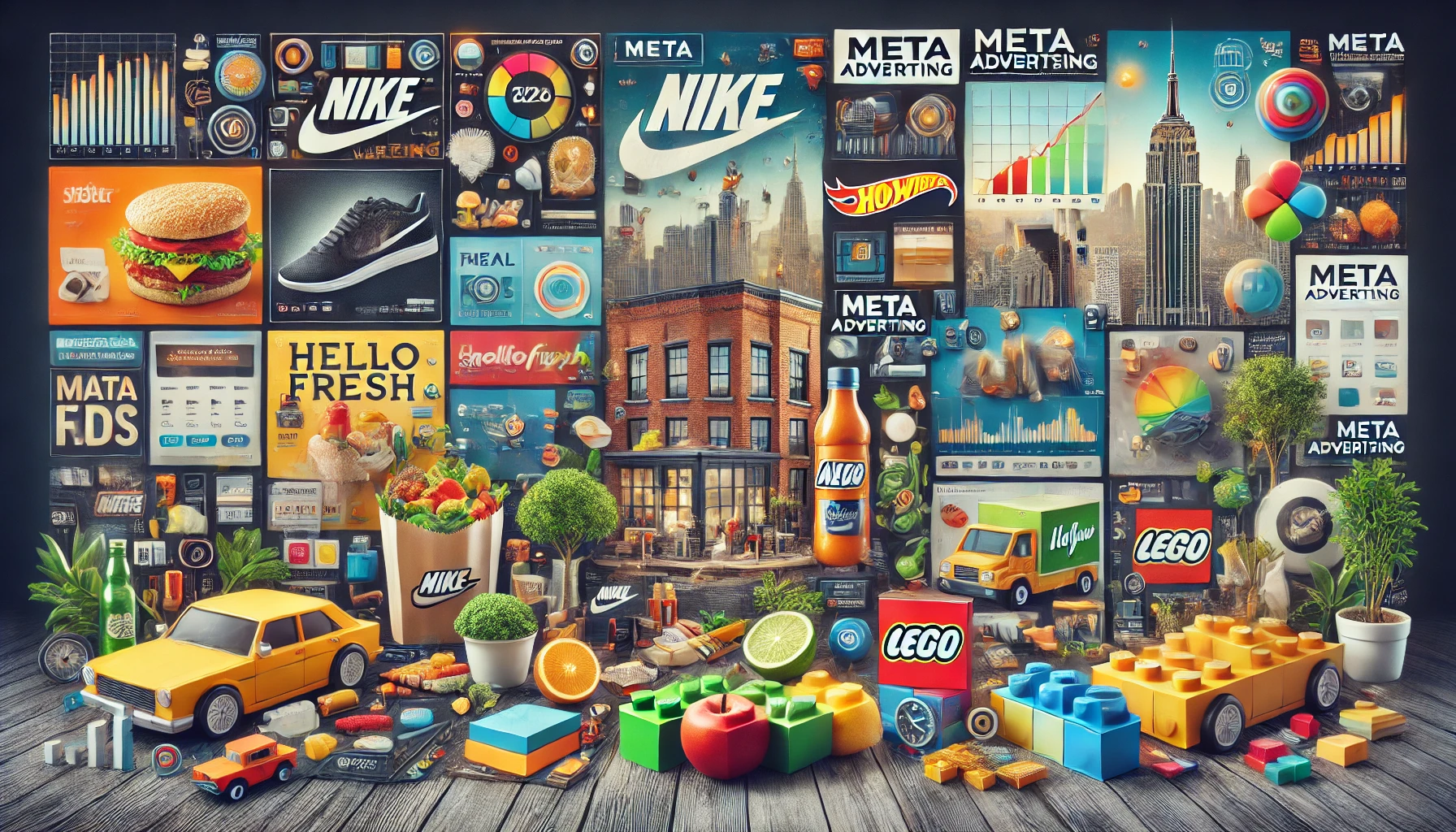The funny thing about SEO is that, for how successful it is at getting your website more organic traffic and ultimately sales, Google definitely doesn’t make it easy for marketers.
You already know that SEO isn’t like throwing up a billboard and waiting for the phone calls to come in. If you want to be good at search engine optimization, you have to put the work in consistently.
Google launched more than a dozen updates each year in 2021 and 2022 –that we know about. And sure, the search engine takes plenty of time to explain many of its updates, but you’d have to follow along throughout the year to be aware of them all.
I’m not here to offer an alternative to that. It’s just the business we’re in; if you want to keep up on the best practices from technical SEO to link building, you have to make the time.
Having said all that, I’m also happy to offer a cheat sheet of sorts for increasing your online traffic and sales in 2023. These are all facts that we at LSEO know about from doing this work every day for our clients (we also keep up with Google pretty regularly).
Here are some of the most important items I’ve collected that you should know for the year.
1.) Optimize Your Images for Page Speed
I want to start with an area of SEO that I don’t see a lot of other bloggers leading with: image optimization!
Everyone wants to talk about page speed in 2023, and for good reason. In the summer of 2021, Google released its page experience update, which notably included the core web vitals.
Those metrics fall into a crossover area between web dev and SEO. It’s all about how fast pages load and how they affect your website’s user experience.
Basically, if you want to score well in Google’s core web vitals report, you need to have decent page speed, and one great way to do that is to optimize your website’s images.
Why is image optimization important for growing your business’s online traffic and sales in 2023? It’s all about user experience. No one’s going to stay on your site if a bunch of images are slowing up your load time, causing pages to render at a snail pace.
I’ve bailed from websites myself when I discovered they just weren’t loading with any kind of urgency.
Not only is this experience frustrating, but it also causes your users to think your website can’t even be trusted.
And by the way, Google’s algorithm will feel the same way when it discovers your poor load times.
The way to optimize your images for speed is to compress and reupload them (and all without altering the images’ quality!)
Depending on the size of your site, this could take you 45 minutes or 45 days.
Ecommerce sites will want to jump on this SEO task as soon as possible, but obviously, it is ecommerce sites that will have the most images.
You can use a website such as Compressor to compress your images manually for reuploading. If you have thousands of images on your site and just can’t take the time for this slow approach, you can use plugins on your CMS to optimize your image files for you.
WordPress has a whole bunch of them, as will whatever other CMS you use.
Beware, though: some image-optimization plugins don’t play nicely with other plugins. They can actually break your site once you activate them, and the damage can’t be undone by deactivating them.
Talk to your devs about creating a site backup before flipping the switch on any image-optimization plugins.
2.) Smart Site Structure
If you want to skyrocket your likelihood of getting traffic and sales this year, here’s one thing you absolutely cannot put off until later: a simple, top-down site structure.
A complex and illogical site navigation and category structure will frustrate users and confuse search engines, and you won’t get decent rankings or traffic.
But what do good and bad site structures even look like?
Here’s an example of a simple and straightforward structure that will make users and Googlebot happy:
What do you notice about that setup? To me, it looks like a five-year-old made it, but that’s a good thing!
We go from the homepage to the two main service pages of Web Development and Search Engine Optimization. Each service page then breaks down into subpages. You should also interlink to and from all the pages where it makes sense to do so, particularly inside of each main category.
When people hover over your menu and see that structure, they’ll know exactly where to go. And if that’s the case for them, it will be the case for Google and all other search bots.
As with image optimization, implementing a logical and simple site structure will be especially important for the SEO strategies of ecommerce sites.
These are the websites with a lot of pages, for categories, subcategories, products, and even supporting content.
The general rule SEOs like to go by for boosting traffic and conversions is to keep every important page within three clicks of the homepage.
Don’t hide anything six clicks deep on your site or leave any pages orphaned.
Those pages won’t perform well, and their presence can hurt your overall standing in the eyes of Google.
3.) Always Write for the Content Marketing Funnel
I remember when I first started in SEO, I’d often hear the analogy of search engine optimization not being the practice of “throwing things at the wall to see what sticks.”
That made conceptual sense to me, but I didn’t know how it would ultimately apply to what I would be learning.
Pretty soon, I learned what the comparison meant. It’s all about strategy, and that applies across the board.
Whether you’re an enterprise-level business or the family law attorney down the street, you need a strategy for your SEO, a way to go about getting what you want that’s better than what everyone else is doing.
Nowhere is that more vital than in your content marketing efforts.
If you know even a little about SEO, you know that everyone recommends that you write content for your website, no matter your industry.
The thing is, anyone can write. Anyone can throw up some blog posts for the users who already know about your site and might just read your stuff regularly.
But that isn’t what SEO content marketing is about. It isn’t writing general content for the 17 people out there who know your name.
Content marketing is all about creating engaging, relevant content that attracts people who want to know about those topics, not necessarily people who know who you are (it’s one reason we don’t target branded keywords in SEO keyword research).
There are many points to keep in mind as you write your website content, but I want to go more high-level here: when you produce SEO content, do so with the content marketing funnel in mind.
Just as there is a sales funnel in business–where salespeople work on selling things by following a series of steps based on the archetypal “buyer’s journey”–there is also a sales funnel in SEO content marketing.
We want to use website content to capture audiences in each stage of the buying journey.
What are those stages?
Different outlets might label them differently, but they are:
- Awareness
- Evaluation
- Conversion
Even if you know nothing about the content marketing sales funnel, those three stages probably make complete sense to you.
People won’t buy from your business if they aren’t aware of you and what you offer (obviously), how your offerings compare to your competitors, and how other consumers have enjoyed working with you.
So, what you need to do is create content for each stage of that funnel.
Here are some common examples of content that goes in each stage:
Awareness Stage
- Blog posts
- Infographics
- E-books
Evaluation Stage
- Case studies
- Webinars
- Quizzes
- Surveys
- Resources
- Discounts
Conversion Stage
- Customer success stories
- Testimonials
- Demos
- Live events
Looking at those lists, you can see how each piece of content makes sense for the buyers in that stage.
Blog posts and e-books are great intro pieces for answering a question a user had and showing your own expertise along the way.
Once people know what they need, they want to know if you’re the right one for them. They’ll evaluate you by reading your case studies and taking advantage of your discounts.
When they’re ready to convert, they’ll want to be sure they’re making the right choice by reading stories and testimonials of your existing customers.
To capture the traffic you want and give yourself the best shot at making more sales in 2023, be sure to create content for all stages of the funnel.
4.) Get into Creative Link Building
Now let’s talk about a big-investment/big-reward SEO tactic: link building, specifically, creative link building.
Google considers your website in different lights depending on your backlink profile. Sites with quality links from many referring domains are doing it the right way. Sites with a bunch of spammy “toxic” links usually end up suffering in the rankings.
So, as you’re creating content, you’ll want to get people to engage with it through link building, but like I said, you should use creative methods to do this.
I’m not necessarily talking about the guest-posting method that a lot of SEOs like to do. There’s nothing inherently wrong with guest posting, but a lot of people abuse it, and anyway it isn’t particularly inventive in 2023.
As we wrote in our 2023 guide to link building, there are plenty of alternatives to guest posting.
Link Reclamation
Take link reclamation as one example. You might create thousands of opportunities for new backlinks for your website just by repairing all the broken links you have in your profile.
Let’s say you’ve been in the digital space for years. You have thousands of backlinks. Over time, as you move pages around on your site, you unwittingly break those backlinks, because now, a whole bunch of them are going to 404 pages.
You can use Ahrefs to find broken backlinks to your site and then work on correcting them.
There are several ways to go about this.
You can reach out to the webmasters who link to you and give them updated URLs for your links.
If this approach is too manual and time-consuming for you, consider simply adding redirects to the pages being linked to. Those pages you moved may have been broken, but now they’ll work again and keep the links flowing.
Broken Link Building
My colleague Bill wrote an excellent guide to broken link building, where you can learn more about this often-fruitful method of link building.
In the metaphorical nutshell, broken link building consists of finding broken external links on other people’s sites and then offering webmasters content of your own to replace the link destinations.
The essence of broken link building is that you’re looking for backlinks from people, but you’re doing something practical to help them in return.
Broken external links hurt their SEO. Quality backlinks help your SEO. Why not work together?
You’ll use Ahrefs to find those websites you want to contact, as Bill lays out in his post. Sure, it’s a manual approach and takes time, but there is so much SEO potential in doing this.
How does all this tie into increasing your 2023 traffic and sales?
High-quality and relevant backlinks are one of Google’s known ranking factors. The more referring domains you have, and the more authoritative the domains are, the better off your website will be overall.
Google will see that good websites want to link to you, and that says that you have quality content that people find useful.
When that happens, Google wants to rank you higher in the SERPs. That visibility turns into more traffic and ideally more sales.
5.) Create Visual-Rich Pages
The last item that I’m going to cover here to help you get more traffic and conversions in 2023 is going to return to content.
In this case, I’m recommending that each and every main page that you create on your site should contain rich visual elements for the user.
As we wrote about in our guide to using multimedia in content marketing, designing a service page that contains a bunch of keyword-infused text isn’t enough. You should be including elements such as:
- Compressed images
- Videos
- Infographics where appropriate
- Interactive content in middle-funnel content
- Bold, vibrant call-to-action buttons
All of these things help user engagement and will increase the overall time that people spend on the page. People might even start clicking around on your elements or go to other pages on your site, which improves your click-through rate.
Oh, you have a blog post on the top five types of flowers to grow in humid climates? In that post, offer up a link to a survey you have on users’ interests in flowers and the climate where they live. It’s a good chance to learn more about your users and get them to keep clicking.
Google will notice the improvements in your traffic and could reward you with higher rankings (based on your SEO as a whole, of course). Those higher rankings will often result in even more traffic and much better chances of driving conversions.
Step Up Your 2023 SEO with LSEO
Doing SEO well and up to the standards of modern Google takes a lot of time and effort. The fact is that, even if everything I’ve said here makes sense to you, you may not have the time to optimize your site for all of these elements, even if you had all of 2023 to do it.
If that sounds like you, know that LSEO is ready to hit the ground running to help get your SEO off the ground this year.
Call us today to start benefiting from our expert recommendations.



